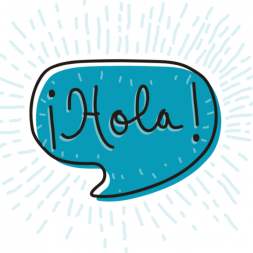7 International Experiences for Learning Medical Spanish
From the legal requirements of working with non-English speaking patients, to the logistics of working with an interpreter, there’s a lot to consider in treating patients from other cultures. While acting as your own interpreter isn’t advised unless you are truly fluent, it is helpful to at least understand a few basics of languages commonly spoken by your patients.
As a nurse practitioner, an intermediate knowledge of Spanish may not allow me to conduct a highly detailed patient history, but I can tell when an interpretation session is getting off track, or at least interact directly with the patient and family on some level.
If you find it difficult to get past ‘hola’, consider brushing up your medical Spanish by attending a continuing education conference or experience to help. Here are a few on-location courses to consider in your quest to ‘hablar Español’.
1. SALUD Medical Spanish Courses
AmeriSpan offers a series of medical Spanish courses titled SALUD. These courses are held in countries like Mexico, Peru, and Spain. Courses give students the opportunity not only to improve Spanish language skills, but also to immerse themselves in culture by living with local families. Students visit medical sites as well as participate in clinical observation to reinforce efforts to master medical terminology.
2. Miguel Angel Asturias Spanish School
The Miguel Angel Asturias Spanish School offers language education for healthcare providers of all language levels. Individual one-on-one instruction is offered five hours each day to maximize mastery. Immersed in the Spanish language, providers make significant progress in just a short period of time. Clinical volunteer placement is also available to those who wish to gain experience helping in the community. Placements may include rural clinics, municipal hospitals, or even remote villages without medical facilities.
3. International Universities
If you’re looking for an intensive medical Spanish learning opportunity, choose a destination, then reach out to a local university. Many foreign schools offer semester-long language courses to international students. Some schools, such as the Universidad de Oviedo in Spain, even offer courses focusing specifically on medical Spanish for healthcare providers.
4. Interhealth South America
Interhealth South America has a longstanding record of providing medical Spanish language training to members of health professions. The Ecuador based program encompasses direct patient care, as well as an introduction to South American primary, community, and public health services. Language and patient care experiences occur in both the one-on-one and group environments making the program a good fit for a wide range of learners. No previous Spanish language skill is required to participate.
5. Pop Wuj
Pop Wuj in Guatemala takes a service-learning approach to teaching Spanish courses for healthcare providers. The 4-week long course is intensive with four hours of daily one-on-one medical Spanish instruction. Supplemental clinical experiences are offered three to four days a week. Group lectures also help compliment individual instruction. During the program, students live with a Guatemalan host family making for a full cultural experience.
6. Medical Studies Abroad
Medical Studies Abroad hosts continuing education conferences for medical providers intermittently throughout the year in beautiful Costa Rica. The conference is accredited for 20 hours of CME credit, ensuring nurse practitioners can count the learning experience toward continuing education requirements. Conference attendees also have ample time to explore nearby beaches and jungles, as well as take advantage of activities such as whitewater rafting.
7. Ríos Associates
Initially created for the National Health Service Corps, Ríos Associates‘ Spanish language programs for healthcare providers have a proven track record. The company hosts several workshops each year throughout the U.S., as well as in Mexico, accomodating both students seeking at-home and abroad experiences. Mexico courses include eight days of intensive, individually tailored, conversational lessons, as well as afternoon activities designed to utilize classroom skills.
What resources have you found to improve your medical Spanish?

